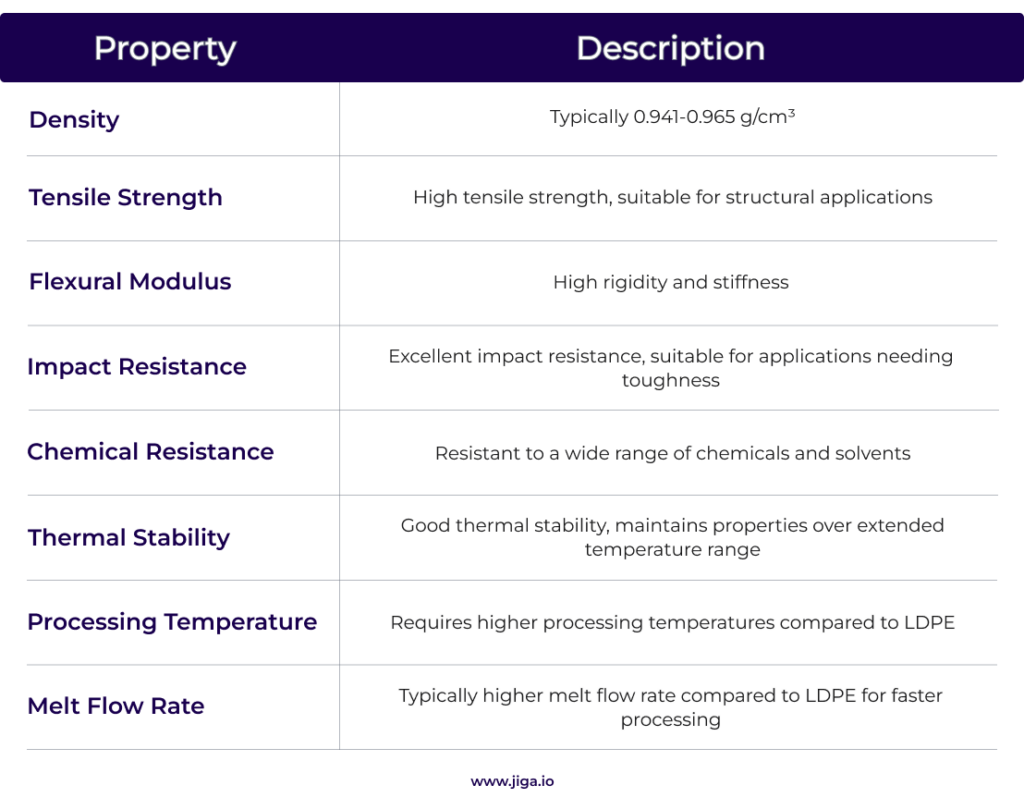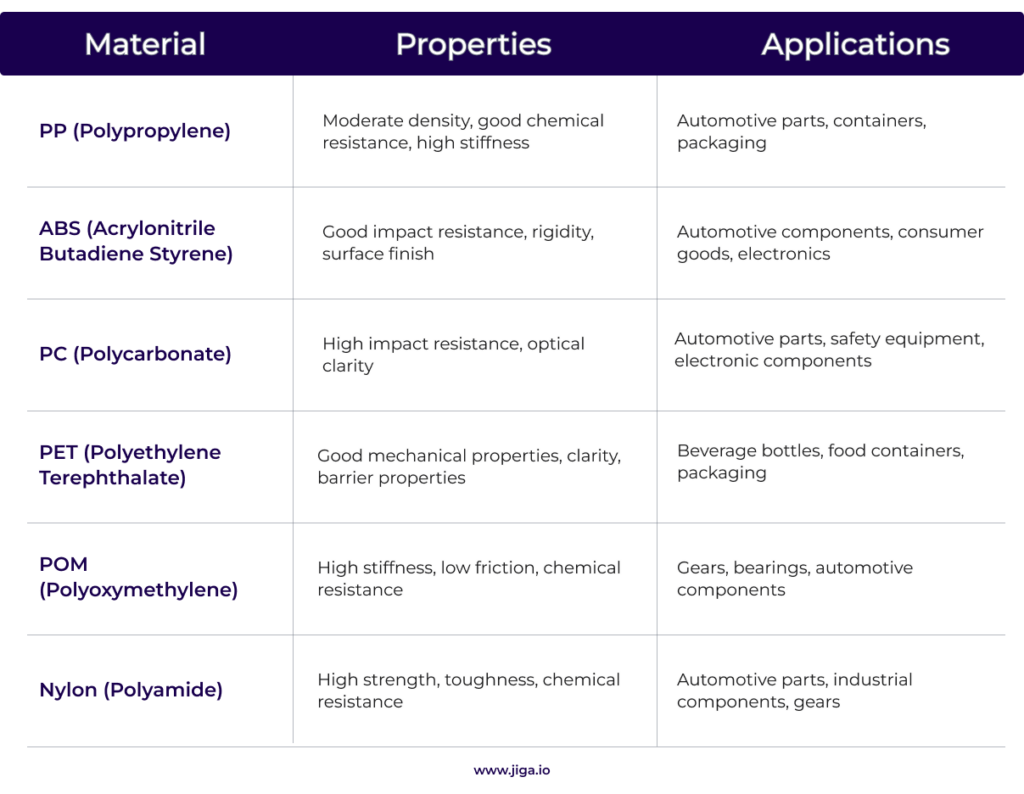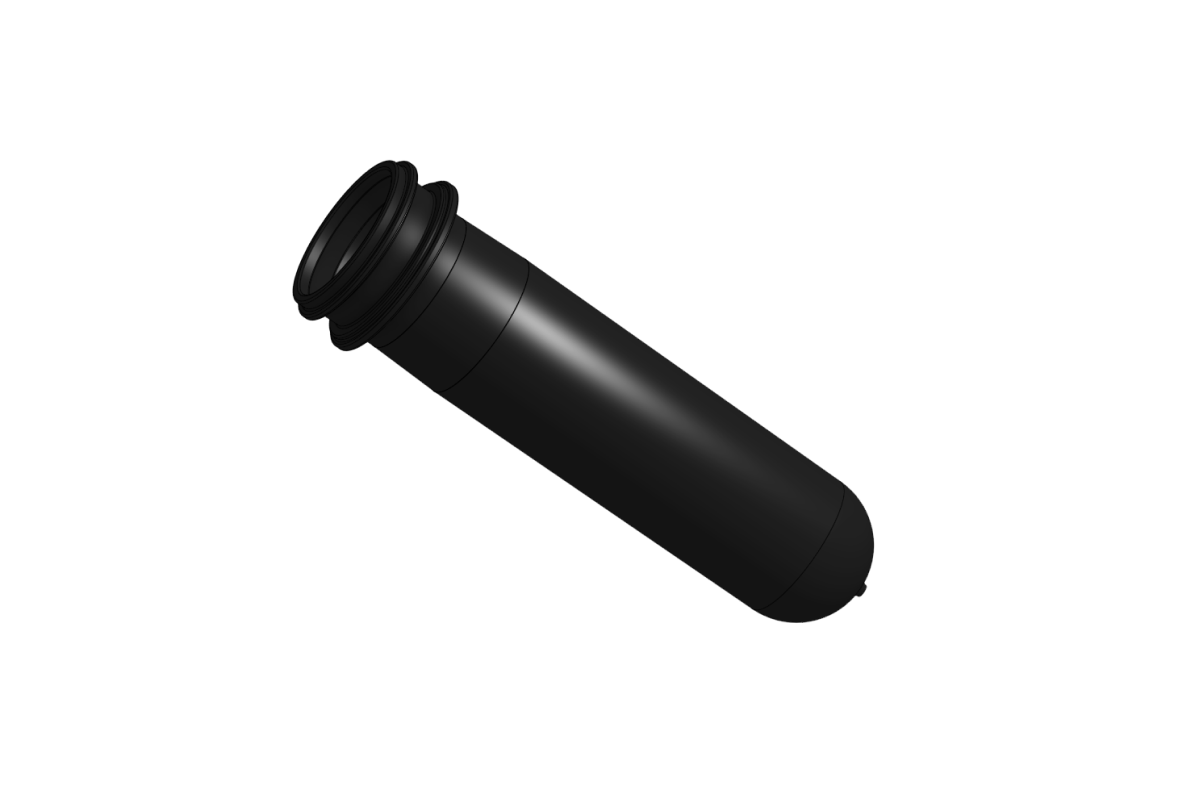If you’re exploring the possibilities of molding in high density polyethylene, you’ve come to the right place
In a snapshot: HDPE (high-density polyethylene) injection molding is a widely used manufacturing process for production of finished and precursor components. HDPE is a tough, resilient and chemically stable material that has a moderate melting point and remarkably good wear and friction properties. It’s low cost, easily processed and serves well in a wide range of consumer, medical and engineering roles. It’s not great for the highest precision applications and you can only glue it with great difficulty, although it responds very well to heat-seal and welding.
If you still think it might fit your needs, then here’s our deeper dive into the manufacturing process, applications, benefits and shortcomings. You’ll also discover tips to help you make more informed decisions about its use. Plus, if you decide to go ahead with it, we’ve included design guidelines to assist you.
Technical Properties
The spectrum of molecular weight of HDPE and its distribution within a material sample significantly influences its mechanical properties. Higher molecular weight polymer tends to exhibit greater tensile strength, impact resistance, and toughness due to increased chain entanglement and elevated intermolecular forces. Additional benefit of the higher molecular weight HDPE materials are improved resistance to environmental stress cracking and greatly reduced creep deformation.
- The molecular weight distribution (MWD) describes the range and proportion of molecular weights present in the polymer. Narrow MWD HDPE has a more uniform distribution of molecular weights and often exhibits enhanced mechanical properties and processability compared to more widely disparate MWD HDPE.
- Engineers can select the precise mechanical characteristics that best fit their project when selecting the type of HDPE. The two variables of mean molecular weight and MWD heavily influence properties while only moderately affecting material cost and processability. This facilitates informed decisions that optimize performance, durability, and cost-effectiveness in component function. Conducting mechanical testing and analysis on alternate HDPE grades can further aid in selecting the most apt material for any specific application.

Material Selection Criteria
HDPE is often preferred over other materials for various applications due to its exceptional combination of properties, cost-effectiveness and recyclability.
In particular, HDPE offers significant advantages over materials like metal or other plastics in terms of processability and cost.
Performance under environmental stressors is another key factor favoring HDPE. It exhibits excellent resistance to chemicals, moisture and abrasion, making it suitable for outdoor and harsh environments. Unlike metals, HDPE does not rust or corrode, leading to longer service life and reduced maintenance costs.
Life cycle analysis (LCA) generally supports a strong preference for HDPE over other polymers, offering long-life that results in a low net cost of ownership. HDPE is highly recyclable, such that it can be reprocessed into new products, contributing to resource conservation and waste reduction. Comparative analysis demonstrates that HDPE outperforms alternatives in terms of durability, longevity and reduced environmental impact, in large part because of this high recyclability index. While other materials offer specific advantages, HDPE’s beneficial balance of performance, low cost and enhanced sustainability through re-use renders it a preferred choice across a wide spectrum of industries and applications.
HDPE alternatives

Several alternatives to HDPE exist for injection molding, each offering some particular benefits in its properties and functional advantages depending on the specifics of the components use context. Some notable alternatives include:
- Polypropylene (PP) is a thermoplastic polymer of high strength-to-weight ratio, extreme chemical resilience and moderate stiffness. It is commonly used in injection molding for applications requiring good impact resistance and flexibility, such as automotive parts, packaging and consumer goods.
- Polystyrene (PS) is a versatile thermoplastic with excellent clarity, rigidity, and dimensional stability. It is often used in injection molding for applications such as food packaging, disposable utensils and single-use medical devices.
- Acrylonitrile Butadiene Styrene (ABS) is a durable and widely exploited thermoplastic appreciated for its toughness, excellent surface finish, impact resilience and heat tolerance. It is commonly used in injection molding for applications requiring high strength and cosmetic surface finish, such as automotive parts, electronics housings and consumer products.
- Polyethylene Terephthalate (PET) is a transparent thermoplastic with excellent mechanical properties, chemical resistance and barrier properties. It is widely used in injection molding for applications such as beverage bottles, food containers, and packaging materials.
- Other options include nylon, acetal (POM) and polycarbonate.
Each of these alternatives offers particular advantages with variable applicability, chosen based on factors such as cost, performance requirements, environmental considerations and regulatory compliance.
Advantages of HDPE
- Excellent tensile strength and resistance to impact, making it suitable for a wide range of applications requiring durability and toughness.
- It is highly resistant to chemicals, acids and solvents, making it ideal for applications in corrosive environments such as chemical storage tanks and pipes.
- HDPE is recyclable and can be melt-reprocessed multiple times without significant degradation, making it an environmentally beneficial choice.
Disadvantages of HDPE
- It has a relatively low melting point compared to many engineering plastics, limiting its use in high-temperature environments.
- HDPE has lower rigidity compared to some other plastics, which may limit its suitability for applications requiring high stiffness or dimensional stability.
- In lower molecular weight and higher MWD embodiments, the materials can have lower creep resistance.
The strengths and benefits of HDPE injection molding
- Excellent chemical resistance, making it suitable for containing many aggressive chemistries and solvents.
- High resistance to UV degradation.
- High strength-to-weight ratio facilitates durability and structural integrity.
- Ease of processing, facilitating cost-effective manufacturing.
- Versatility in applications across multiple industries.
- Recyclability, contributing to sustainability efforts.
The weaknesses of the products of this process are also well understood:
- Limited resistance to high temperatures compared to more engineering thermoplastics.
- Challenging to bond with adhesives or weld compared to most other plastics.
Applications of HDPE injection molding
Biocompatible devices: HDPE is extensively used in the medical industry for the manufacturing of biocompatible devices such as implants, prosthetics and surgical instruments. Its biocompatibility, durability and resistance to various sterilization processes make it an attractive choice for medical applications.
Additive manufacturing: These materials are being explored in 3D printing to create complex parts with intricate geometries. By this means, engineers can produce prototypes, custom parts and low-volume production runs more efficiently and cost-effectively, while still leveraging the mechanical properties of HDPE.
Sustainable packaging: With a steadily incrementing emphasis on sustainability, HDPE injection molding is being employed for the production of more eco-friendly packaging solutions. Its recyclability and versatility make it suitable for creating packaging materials that are both durable and environmentally responsible, contributing to the reduction of plastic waste.
Applications for HDPE injection molding covers a wide spectrum of components and tasks:
- Packaging: This material class and processing method is commonly used in the production of containers, bottles, and caps for food, beverages, household products, and personal care items due to its excellent barrier properties and durability. The majority of these applications use injection blow molding (IBM) in which an injection molded preform is then blow molded to form the finished container.
- Automotive: HDPE parts are used in automotive components for fuel tanks, bumpers and interior trim due to their lightweight nature, impact resistance, and ability to withstand harsh environmental conditions.
- Construction: HDPE injection molded products find applications in the construction industry for items like pipe fittings and geomembranes due to their chemical resistance, flexibility, water resistance and longevity.
- Medical: HDPE is widely used in medical devices and equipment, including syringe plungers (less commonly barrels), IBM made IV bags and medical packaging, owing to its bio-inertness, sterilizability and imperviousness.
HDPE Design Guidelines
Design for Manufacturability (DFM) principles specific to HDPE injection molding require extensive understanding of the material’s properties and manufacturing process to drive optimization of part design. Common design pitfalls to avoid include sharp corners, thick sections and inadequate draft angles. Common molding defects are sink marks, warpage and difficulty in ejection.
Optimal part design guidelines:
- Ensure uniform wall thickness, incorporate generous filets and radii, and minimize the use of undercuts.
- Employ ribs and gussets for structural reinforcement, but avoid unnecessary material usage which results in cycle time increase.
- Additionally, optimize gate and ejector pin locations to facilitate smooth filling and ejection.
- Balancing functionality and manufacturability is best achieved by early collaboration between designers and molders: application of simulation tools to predict mold filling and part behavior: and conducting prototyping and testing to validate designs.
Injection Molding Troubleshooting
Common problems encountered during HDPE injection molding, such as shrinkage, warping, and voids can be addressed through practical solutions and preventive measures in part design and adjustment of molding parameters.
- To mitigate shrinkage, optimize gate design and location to ensure uniform filling and cooling, while adjusting melt and mold temperatures to minimize thermal differentials.
- To prevent warping, incorporate adequate draft angles and filets to facilitate easy ejection, and use a well-balanced mold design to distribute cooling evenly.
- Additionally, consider annealing or stress-relieving processes post-molding to reduce internal stresses, which can prevent slow post-molding distortions.
- Void formation can be minimized by maintaining proper melt temperature and pressure, using high-quality and appropriately dried resin with minimal moisture content and optimizing venting to allow air and gasses to escape.
- Regular maintenance and cleaning of molds, as well as monitoring process parameters closely during production, are essential preventive measures.
By implementing these solutions and measures, manufacturers can improve the quality and consistency of HDPE injection molded
Tooling and Mold Design
Adherence to best practices for tooling and mold design specific to HDPE injection molding are crucial for ensuring quality and repeatability in product outcomes. When selecting materials for molds, moderate corrosion-resistance and high wear-resistance are appropriate,making cavity faces hardened tool steel.
Gate location and size are critical considerations to achieve smooth filling and minimize defects and internal stresses. Optimal gate locations are at the thickest part of the component to facilitate proper flow and minimize pressure drop. Gate size should be proportional to the part size, to facilitate the required flow regimes.
A high-functioning cooling system is critical to moderation of cycle times and minimization of warping and shrinkage. Efficient cooling channels must be strategically positioned to ensure uniform cooling throughout the mold.
Conclusion
Molding HDPE offers significant advantages, such as high strength-to-weight ratio, chemical resilience and high recyclability, making it a widely selected choice for low cost and demanding applications alike. Despite its advantages, challenges like shrinkage and warping require careful management during the molding process.
The ongoing development of HDPE in injection molding is delivering a steady pace of innovations. Advances in materials science are resulting in enhanced HDPE formulations with improved mechanical properties and processing characteristics – such as enhanced MWD without increased cost. Additionally, advancements in mold design and manufacturing techniques are improving the production of more complex and customized parts.
In general, HDPE injection molding remains at the forefront of mass production and continues to evolve, driven by ongoing research and development efforts. These seek to address current limitations and unlock new potential for the materials use in a greater diversity of sectors and increasingly precise and demanding contexts.
HDPE remains a versatile and valuable material in the injection molding landscape and its ability to deliver high quality outcomes is steadily improving.
